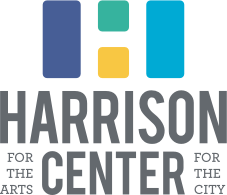Black Spaces
Even after the end of explicit, legally-enforced segregation, the divestment and disenfranchisement of Black communities, in addition to income, wealth, and education disparities have all contributed to the challenges, systemic and social, of being a Black person in America. The word ‘resiliency’ is often used when describing the African American community, and it’s true, the strength required of people to not let opposing barriers determine their lives, futures, and success is inspiring. But resiliency is the result of strength being consistently required of you; it’s an added burden on daily life, the positive response to accumulated anxiety, fear, and loss being a normal experience.
Black spaces are places where that resiliency can take a deep breath, where stories are told and culture is passed on, where black and brown community can exist and flourish within cities and places that suppress and oppress access to that fullness of life. They could be thought of as analogous to safe spaces: Places for community to exist outside marginalization— the pressures or dangers that are present in larger society.
The Barbershop, Courtland Blade
Safe spaces are often found on university campuses or in workplaces, intended to offer an opportunity for things like the discussion of social issues that affect the marginalized group, without the threat of harassment or violence from outsiders. In the U.S., the concept of safe spaces has a history in the women’s movement and LGBTQ rights campaigns, and has been adopted by many youth organizations.
Safe spaces have been criticized by various people and institutions, both conservative and progressive, as an erosion on free speech, as limiting to the progress brought about by mutual dialogue, and as another symptom of modern fragility, similar to critiques of trigger warnings and microaggressions.
The concept and intent, as with any idea and practice, can of course be corrupted. It is worth considering though, how much the majority society— whether referring to gender, ability, race, ethnicity, etc.— already inhabits a safe space simply by existing in a world in which they hold power, privilege, or access to both.
Safe spaces can be set up by institutions or advocacy groups, but they can also come about as community spaces for people to be fully human in a way that the majority society does not allow.
Earl Cantrell, by Abi Ogle
One such carrier of community history is the motorcycle group the Rough Riders, that was based in the Hillside neighborhood for over 40 years. Their clubhouse has served their local community and has also been the subject of a song by Seaux Chill, a Baltimore musician who did a residency at the Harrison Center, some beautiful paintings, including a portrait of their President and Greatriarch, Earl Cantrell, by Abi Ogle and their clubhouse by Courtland Blade.
Rough Riders Club, Courtland Blade
Another is the Walker Theatre, built in 1927, and located on Indiana Avenue, having been preserved and designated a historic landmark. The building served as the former world headquarters for the Madame C.J. Walker Manufacturing Company, where the successful line of beauty and hair products designed for Black women were made. A laboratory and beauty school existed in the building, as well as a theatre, among other things. Now, it houses the community focused nonprofit, the Madame Walker Legacy Center.
Walker is regarded as the first female self-made millionaire in America, as well as a generous philanthropist, arts patron, and activist who supported African American organizations and artists. Madame Walker is remembered as an important local figure who created space where there wasn’t space before, culturally and economically, and who impacted generations of Black women, in Indianapolis and across the country. Her story is celebrated in “Learning Beauty Culture,” a song by Andrew Christenberry, Brandon Lott, and Tucker Krajewski, written as part of the neighborhood ballad project, a spoken word song series about significant figures throughout the history of urban Indianapolis.
Walker Theatre (Front) by Courtland Blade, from the show Black Spaces and Places
The Walker Theatre is one of the only remaining structures on what used to be a thriving street full of businesses, clubs, shops, housing, and schools, called the center of Black culture in Indianapolis. The historic street has been the subject of songs by musicians who have done residencies at the Harrison Center, including “Avenoo Blues,” by Brant Wilson, about the golden age of jazz in the area. The Black spaces of Indiana Avenue and the community of surrounding neighborhoods suffered and declined for decades, at some points dismantled by segregation, at others, cut off from financial services and safe housing, before becoming an unrecognizable part of the city landscape as part of a large scale economic development project.
Displacement could be thought of as the opposite of a safe space— the absence of a secure foundation, of belonging to and having agency to remain in a place, of being able to reasonably expect security and acceptance somewhere. Displacement has a history in Indianapolis and in the U.S. as a means of rebuilding cities the way the power-holders want them to be, rather than the way they had previously evolved.
Indianapolis, and much of the rest of the world, is in a space of opportunity. Black-owned businesses, shops, non-profits, and centers for arts and culture are spaces for opportunity, innovation, and investment, as Indianapolis looks to its past leaders and entities for inspiration while creating communities that can thrive in the present. If we are establishing a new normal, we have the space to make changes necessary for a better, more just society when we reopen and restart it. The new normal we hope for Indianapolis is one where Black spaces are places of celebration, places that feel like home, places of culture and places to gather; we want Black spaces to not be the only places where our neighbors, brothers, and sisters of color can take a deep breath.
Listen to Episode 6 of Music In Place to hear more Place-Based music about Indy’s Black Spaces.




